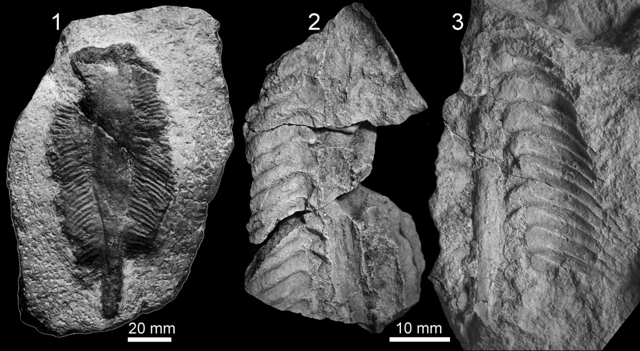Paleontologists have found an ancient relative of the chimera's egg.
Fish are a large collective group of vertebrates that are well adapted to life in water. Although the vast majority of modern fish belong to the bony fish category, representatives of more ancient groups still exist today. For example, the lobe-finned fish like coelacanths or chondrichthyans — sharks, rays, and chimeras.
Chimeras are also known as holostomes due to the characteristic fusion of the upper jaw with the main part of the skull. Their skeletons are entirely made of cartilage. Unlike sharks and rays, chimeras do not have bones, which complicates the preservation of their fossilized remains. This poses challenges for studying the evolution of these enigmatic creatures.
Their ancient lineage is undeniable: they clearly diverged from other chondrichthyans around 400 million years ago. Since then, they have evolved independently, developing a unique body plan (a large head with a long, narrow body), a venomous spine, and a tendency to inhabit deep waters.
Many sharks and rays are ovoviviparous, meaning that the young emerge from the mother already having left their egg cases. In contrast, chimeras simply lay eggs, which have a complex shape. They resemble a wide spindle, with the embryo developing in the middle section. A beak-like projection protrudes at the front (through which the fish emerges), and a stalk is located at the back. The sides are framed by two membranes or nets, reinforced with veins, making the egg bilaterally symmetrical. The entire structure can measure up to 30-40 centimeters.
Eggs of ancient chimeriforms, once very numerous, were likely structured in a similar fashion. Fossils of these creatures were first described in the late 19th century. The oldest of these date back to the end of the Triassic period and are over 200 million years old.
A recent finding from a new article in the Journal of Paleontology is younger and dates to the Eocene epoch of the Paleogene (over 30 million years ago). The egg was discovered in western Washington State (USA), within rocks formed at great depths in the Lincoln Creek formation. This site is a true treasure trove of fossilized chondrichthyans from the Tertiary period.

As is often the case, only a cast of the external coverings of the egg has been preserved. It seems that it had dense coverings made of collagen, similar to modern chimeras. Externally, the eggs of ancient and modern holostomes are very similar. However, the fish themselves differ significantly, for instance, in their tooth structure. Therefore, paleontologists generally find it challenging to accurately determine the genus and species affiliation of the eggs of ancient fish.
In lieu of this, in the late 19th century, provisional groups of chimera eggs were proposed — ichnofossils. These do not necessarily correspond to specific taxa of the fish themselves. Hence, this classification system needs constant refinement and revision.
After studying the new specimen, along with the classic works of predecessors and their findings, scientists proposed to modify the ichnotaxon chimaerotheca (Chimaerotheca). They named it a synonym of Vaillantoonia, — a term introduced half a century earlier (in 1891) and thus holds priority. This means it should remain the only one used.
Interestingly, the scientist who originally described Vaillantoonia sp. thought it was a fossilized cone of a gymnosperm plant — a cycad. However, it was later acknowledged to be the eggs of a chimeriform fish.